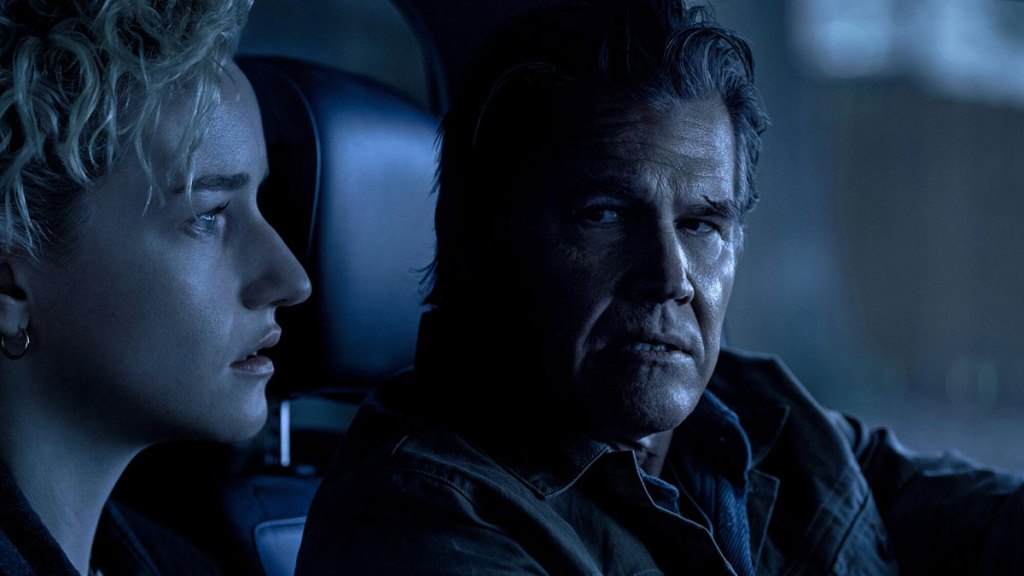Part of what makes Zack Cregger’s Weapons so chilling is that, like 2024’s Longlegs, it’s a film about the horrors occurring in seemingly tranquil places. American suburbia is often thought of and rendered in pop culture as “safe,” a haven from the harshness of city life. Weapons, meanwhile, demonstrate that kids can disappear in these locales. Happy afternoons of hot dogs and lazy TV viewing can turn into bloody chaos in the blink of an eye. Seemingly friendly neighbors can turn on each other in times of turmoil.
Videos by ComicBook.com
It’s an unnerving motion picture suggesting all the terrors lying in plain sight in environments that many audience members inhabit every day. Plus, Cregger’s exceptional visual sensibilities inform a variety of spine-tingling images that are so powerful because they’re so inexplicable. Case in point: the vision of the floating gun in Weapons. What does this dream sequence image mean, and why is its ambiguity so frightening?
Spoilers for Weapons are below
What Is That Floating Gun In Weapons?

Archer Graff (Josh Brolin) is calcified in the sorrow of losing his child, Matthew. One of the 17 kids in Justin Gandy’s (Julia Garner) class that inexplicably left their homes at 2:17 AM. Graff alternates between unbridled rage (largely directed at Gandy) and ceaseless woe while navigating his life’s new status quo.
In the Weapons segment dedicated to his life, viewers see him navigating a dream sequence where he leaves his home at night and follows a trail left by Matthew. As he wanders outside, he looks up to the sky and witnesses a gigantic gun floating amongst the clouds. Carved into the side of this gun is the 2:17 AM time as it would appear on an electronic alarm clock.
This effectively trippy burst of surrealist imagery has inspired all kinds of theories on its underlying intent. One common fan theory is that it’s an extension of how Weapons (especially in its first third) somewhat functions as a horror movie allegory for school shootings. Given the rampantness of those tragedies in America, that gigantic gun could be seen as representing the ominous spectre of school violence lurking over all parents in this country. This possibility of soul-crushing violence hovers like a stormy rain cloud, threatening to bring a downpour of misery and horror onto all.
Meanwhile, this gun could be seen as representing the cycle of toxic masculinity and violence Archer is clinging to as he processes Matthew’s disappearance. Intersecting a reflection of the 2:17 AM timestamp into this gun could quietly suggest that these persistent, harmful parts of Archer’s personality are as enduring as the passage of time itself. Just as the sun rises every day, Archer naturally resorts to aggression and violence (as symbolized by this hovering gun) as his de facto solution to problems. Only when he begins working with Justine (and finally eschewing the instinct to reach for that “gun” as a remedy to all his woes) does hope begin trickling back into his world.
Other fan theories have revolved around how this gun represents Archer beginning to realize that the 17 missing youngsters have been “weaponized” by an unseen force. The nebulous nature of this image makes it clear that this father still doesn’t have all the answers to the all-consuming mystery. However, witnessing this vision and securing an inkling of the larger picture inspires him to take his investigation to even further extremes.
Even Weapons‘ Director Can’t Explain the Gun (And That Makes It Scarier)

What’s fascinating about Weapons’ floating gun image, though, is that, per the director, there isn’t a “correct” answer for what it represents.
While many modern horror movies bog down their scares with exposition or over-explain the frightening unknown, Zach Cregger has openly said he doesn’t have a concrete answer for what this dream sequence represents: While he has some notions about its larger significance, he’s just grateful it exists within the larger creative canvas of Weapons:
“It’s a very important moment for me in this movie, and to be frank with you, I think what I love about it so much is that I don’t understand it,” Cregger told Variety. “I have a few different ideas of what it might be there for, but I don’t have the right answer. I like the idea that everyone is probably going to have their own kind of interaction or their own relationship with that scene, whether they don’t give a sh*t about it and it’s boring, or whether they think it’s some sort of political statement, or whether they think it’s just cool. I don’t really care. It’s not up to me. I just like that it’s there.”
Clearly, what’s important to Cregger is that individual viewers bring their own interpretation to the scene. It’s an approach emulating David Lynch’s refusal to give answers or clarity to masterpieces like Lost Highway or Mulholland Drive.
Eschewing immediate clarity forces viewers to be vulnerable and admit their own unique interpretations of what’s transpired onscreen. That’s often a very daunting prospect for both moviegoers and filmmakers; however, going this route is just another reflection of the ceaseless creative chutzpah of Weapons. There are all kinds of relevant or character-centric elements that Archer’s massive floating gun could represent; any way you take it, it still resonates in a big way. The ambiguity of its intent just makes Archer’s dream sequence feel more hauntingly chaotic and surreal.
Weapons is now playing in theaters everywhere.









